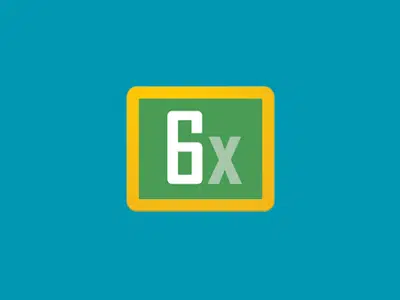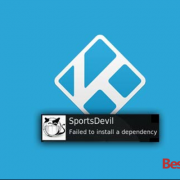There was a time when college students had to travel long distances to access quality education. There were numerous barriers, making it hard for those from remote places and poor socioeconomic backgrounds to get the education they need to thrive in their preferred careers. Today, things have changed and the use of technology in education is becoming increasingly popular. Today, education institutions are looking for the most effective ways to provide equity, better access, and top-notch instruction at affordable rates. In this article, we review the role of EdTech and how teachers and students benefit.
What Is EdTech?
The past few years have seen considerable evolution in the world of technology. More and more people are embracing tech, with smartphones, computers, the internet, artificial intelligence and other forms of innovation changing how we work, interact, and learn. As technology takes over almost all areas of human life, the integration of tech in academia has become even more crucial. To engage students in learning, teachers and administrators have had to be innovative and new ideas have had to be introduced to keep students engaged and interested in learning processes.
So, what is EdTech? EdTech or education technology refers to the computer hardware and software designed to improve learning efficiency and outcomes. It implies the tools designed to improve teacher-led learning within and outside classrooms. The goal is to make instruction more accessible and efficient. While EdTech is still in its nascent stages of development, there has been considerable expansion, with innovation leading to new and promising solutions.
What Are the Benefits of Education Technology?
The role of higher education is to prepare students for life after graduation, whether it goes into employment or entrepreneurship. While there is considerable promise in the field of education technology, some challenges exist. With innovation and better administration, most of the barriers to the integration of education technology can be overcome. That said, there are numerous benefits of EdTech, including:
- Improved Access
One of the most notable benefits of the integration of technology in academia has been in the form of improved access. Previously, students had to travel long distances and use huge sums to access the education they desired. Today, tech provides opportunities for distance learning, making possible to get the education you desire without having to leave your home or town.
Today, students can learn from anywhere, overcoming the restrictions that previously made it hard to get quality instruction. Teachers and students can now overcome the geographical and financial barriers associated with traditional in-person education. Distance instruction makes learning more efficient and convenient. The process of buying coursework is also simpler and more secure.
- Improved Classroom Management
Technology makes work easier for students and teachers. Teachers can access numerous tools to tailor instruction according to student needs and personalities. Teachers can easily assess student abilities and needs. From the outcomes of such assessments, instructors can design pedagogical strategies for greater efficiency. While the benefits of tech for teachers may not be realized immediately, efficient integration of the tools simplify repetitive classroom management processes, allowing teachers to focus on creating bonds with students and delivering personalized instruction.
Teachers can build lesson plans directly into their online courses, reducing the time they take to prepare for classes. Tech also allows teachers to research evidence-based pedagogical strategies, sharing ideas on interventions that work and improving learning outcomes. Tech also makes grading and feedback simpler and immediate. Teachers can advice students on assignment strategies remotely, expanding learning beyond the borders of the traditional classroom.
- Allows Personalized
It should be reiterated that personalized learning is not a learning strategy that only works when technology is involved. The truth is that the idea of personalizing instruction has been around for decades, with evidence showing that students have different learning styles and respond differently to various types of content. What tech has done is allowing faster access to different types of learning resources. Technology has made personalization a more scalable education strategy, instead of a tool used to support students with specific learning needs. Evidence shows that a personalized approach to education, thanks to EdTech, improves the efficiency of learning processes.
Technology has helped the personalization of learning by solving one of its most notable challenges, data. If all students learn in different ways while performing different tasks, then tracking performance and providing feedback can be challenging. If you consider huge classes, getting the data needed for informed decision making can be challenging. The good news is that tech has made it easy to track student performance by collecting and using data. Teachers are better able to get information on student performance and their preferred learning styles. Students also have improved visibility of their progress and learning needs than before.
- Supports Better Engagement
Another benefit of EdTech is that it supports student engagement. Most young people are already using tech elsewhere in their lives. We use technology for work, socialize, and entertain. Evidence also shows that most people consider tech more interesting than traditional learning materials like textbooks. In other words, education tech tools expand the teacher’s ability to engage students. Students can visit new locations and perform field experiences without even leaving their classrooms. Use of educational games is also possible, with evidence showing that gamification is highly effective as an instructional strategy.
- Makes Collaboration Easier
One of the most notable benefits of education technology is that it supports collaboration. According to studies, students who collaborate on tasks tend to retain concepts better and show better learning outcomes. Group discussions and peer-to-peer instruction have been shown to be highly effective. Digital resources support the ability of students and teachers to collaborate on projects outside the classroom environment. Social media platforms and interactive whiteboards support discussions and sharing of ideas. Students can get immediate feedback on their work and improve their writing.
The Bottom Line
Technology has come a long way in improving access to quality and affordable education. Today, students can access updated resources fast and engage in group discussions. Teachers benefit from more efficient classroom management strategies. Of course, more effort is needed in training teachers to use EdTech in modern classrooms.















Comments